HIDDEN ROME FROM A TO Z
Rome is not only made up of great artistic duels between famous characters: Bernini versus Borromini, Michelangelo versus Raffaello, Caravaggio versus Carracci.
Although, in fact, the works of these masters decorate in an extraordinary way symbolic places of the Eternal City, there are some jewels more concealed from view that, between Rome and the Province, can literally make your eyes squint and delight your spirit.
The questions are: is it possible to create an alphabetical list of these co-protagonists of art in Rome? Can we transform them for once into the true duellists of this competition? Is it true, as Andy Warhol used to say, that “everyone will be world-famous for 15 minutes”?
For Rome Guides, Cultural Association organizing Private Guided Tours in Rome, the answer is YES!
The gauntlet of the challenge is thrown down. Which of them will win the prize for Best Supporting Actor?
A as ALGARDI
If Bernini had not dominated the 17th Century in terms of sculpture, perhaps today we would speak more emphatically of the bolognese Alessandro Algardi. More classicist than Bernini’s baroque tendency, he was an eclectic artist, as skilled in monumental works (Tomb of Leo XI) as he was in portraits (Benedetto Pamphilj, in the photo) and in small format sculptures.

B as BURNE-JONES
The painter Sir Edward Coley Burne-Jones, an illustrious member of the English Pre-Raphaelite group, decorated the Anglican Church of St. Paul Inside the Walls with an admirable series of mosaics, depicting scenes from the Apocalypse and portraits of the Fathers of the Church. Curiosity: many saints have the faces of key figures of the 19th Century, such as St. Andrew (Abraham Lincoln), St. Patrick (General Grant) and St. James (Giuseppe Garibaldi).
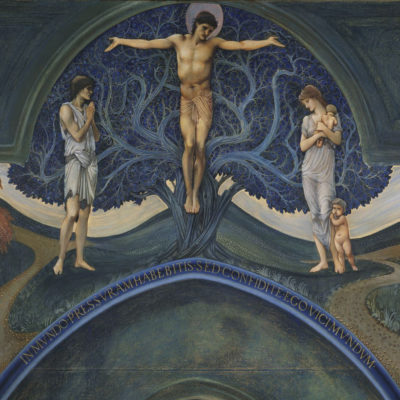
C as CADES
Palazzo Chigi in Ariccia offers to the visitors the chance to admire the Hall of Ariosto, one of the best pictorial achievements of the Roman 18th Century, both for its pictorial quality and for the strength of its poetic inspiration. The turbulent nature of Giuseppe Cades, known for his restless talent, frescoed for Prince Sigismondo the scene of his most beloved poem, the “Orlando Furioso”, giving us the opportunity to be immersed in tales of women, knights, weapons and love…

D as DUQUESNOY
When, from the St. Peter’s Basilica, reached perhaps at the end of the Vatican Museums Tour, you descend into the Vatican Grottoes, you have to take the narrow staircase topped by the colossal St. Andrew, sculpted by the Flemish sculptor François Duquesnoy. Specialized in the representation of Putti, for which he became very famous, he then concentrated on the large solemn format, including the statue of St. Suzanne in St. Mary of Loreto.
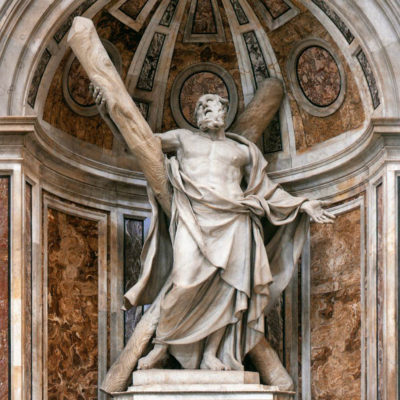
E as EUPHRONIOS
At the National Museum Cerite, on deposit at the Etruscan Museum of Villa Giulia, you can admire this amazing crater, stolen in 1971 and returned in 2008, made in the 6th Century BC by the master of red figures Euphronios. On one side the death of Sarpedonte stands out, on the other the dressing of young Athenians, but what is important to know is that Leagro was certainly the most beautiful man in Greece at that time, as indicated by one of the inscriptions.
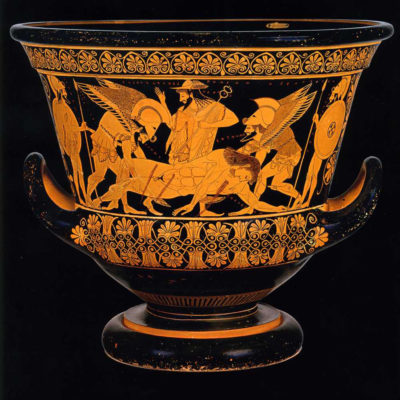
F as FERRATA
Looking at the façade of the Church of St. Andrew of the Valley, you can see an angel suspended on the left side of the cornice, missing instead from the opposite side in evident asymmetry. According to tradition, the angel sculpted by Ercole Ferrata did not like Pope Alexander VII, who denied him the money to sculpt a second one. Ferrata, embittered by criticism, does not hold back the disappointment: “Doesn’t the Pope like the angel? Then he can do the other one by himself!”.
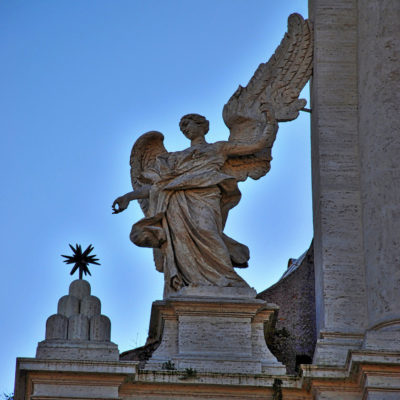
G as GHERARDI
Imagine to book a Tour of Trastevere, to enter St. Mary in Trastevere and to admire the splendid medieval apse glittering with gold, or the columns coming from the Baths of Caracalla. No one would expect a baroque work in this sacred place, and instead here is the masterpiece of the versatile painter/architect Antonio Gherardi, with his extraordinary vault of the Avila Chapel, designed by him along the left aisle.
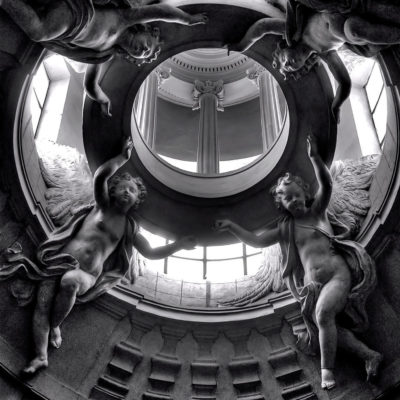
H as HADID
One of the most visionary architects of our time, Zaha Hadid has literally redefined the architecture of the 21st Century. The white background of the interior surfaces, as opposed to the self-supporting black metal staircases, creates a feeling of contrast, harmonized by a series of bridges and walkways that unite the different areas. Cement, glass and metal are fused together by a literally overflowing inventive capacity.
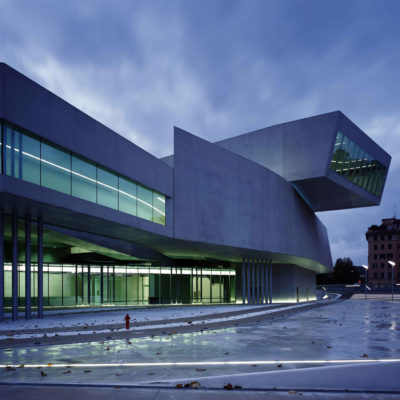
I as ISAIAH FROM PISA
A sculptor and marbler of mysterious adolescence, Isaiah from Pisa came to Rome as an “expert magistrate” to embellish the city with his masterpieces. His is the Sarcophagus of St. Catherine and the Sarcophagus of Pope Eugene IV, as well as a real decorative delight, the bas-relief of St. Mark the Evangelist above the entrance portal of the Church of the same name, near Venice Square, with the lion crouching like a kitten at the foot of the throne.
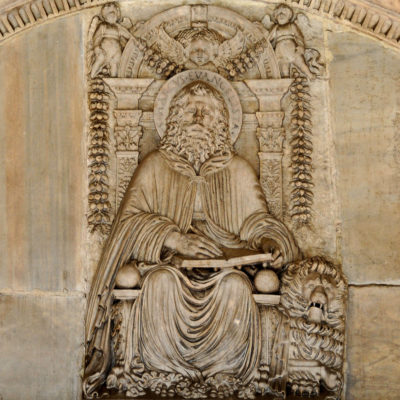
J as JACOMETTI
In the Collegiate Church of Anguillara Sabazia, it is still possible to admire the plaster works of Ignazio Jacometti, neoclassical sculptor (and prolific father, considered the nine children…) who left small masterpieces in strategic places in Rome, such as the Kiss of Judas at the Holy Stairs, the statue of Moses on the base of the Immaculate Conception Column or the sculpture of Pius IX praying in the confession of St. Mary Major (in the photo).
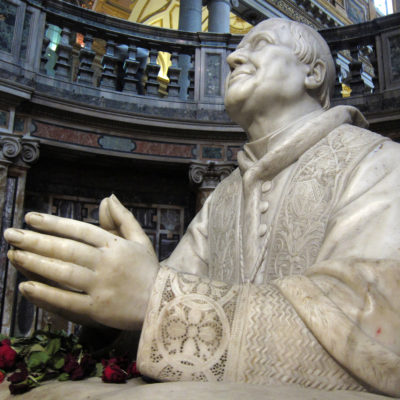
K as in KOCH
After the conquest of Rome, with the city becoming the capital of the new Kingdom of Italy, it became necessary to renew its urban planning, and one of the main protagonists became the architect Gaetano Koch. His masterpiece are the two porticoed buildings surrounding the Republic Square, built at the end of the 19th Century exactly on the exedra of the Baths of Diocletian, transforming the square into a scenic theatrical backdrop.
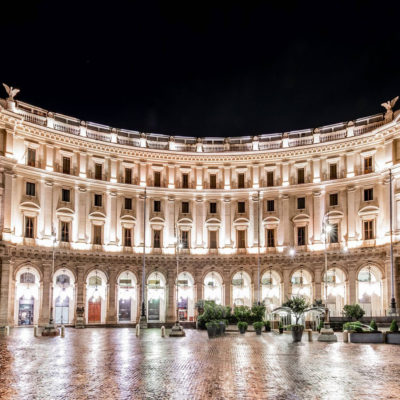
L as LIGORIO
How could we not know Pirro Ligorio, the brilliant architect of Villa d’Este, designer of the enchanting Pio V’s Casino, builder of the niche of the Belvedere Courtyard? Well, in his time, that was not enough to get a quote. His name was in fact literally eclipsed by Vasari in his Lives, because of the claims of Michelangelo who, having furiously quarrelled with him, asked Vasari himself to exclude his antagonist from the report.
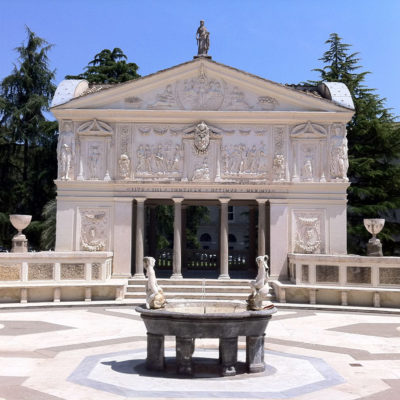
M as MORBIDUCCI
Imagine being able to read a bas-relief in travertine as if it was a written page, in an uninterrupted historical continuity, from the she-wolf suckling Romulus and Remus to the arrival of Mussolini on horseback welcomed by the children. It is the absolute masterpiece of Publio Morbiducci, visible at the Office Building at EUR District. Almost everything is in perfect condition, except for the face of the Duce, scarred in the summer of 1943 as “damnatio memoriae”.
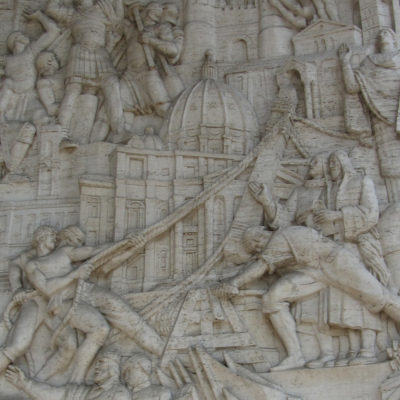
N as NICERON
Nothing leaves more interdicted than the extraordinary inventions of Jean-François Niceron. Professor of mathematics, expert in geometric optics and perspective, Niceron invented a real science of illusion by perfecting anamorphosis: figures become visible only from specific points of view, or only if reflected on the mirroring surface of metal. Extravagant and bold, Niceron is the sublimation of the Baroque.
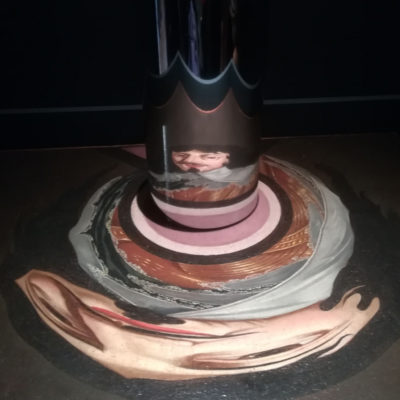
O as OVERBECK
Ascetic life and hard work: this is the precept of the Nazarenes by Friedrich Overbeck, determined to reject every classic work because it is pagan through a rigid, practical and decisive style. Overbeck, in bad health, took ten years to realize his Roman masterpiece: in Villa Massimo, in fact, he extracted from the cylinder a superb pictorial decoration inspired by Torquato Tasso’s poem, the “Jerusalem Liberated”.
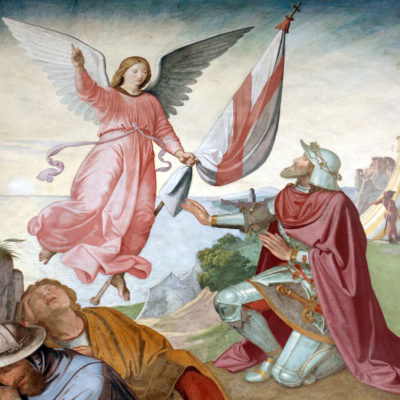
P as PRETI
Born in the province of Catanzaro and appointed knight by Pope Urban VIII, the “Calabrian knight” Mattia Preti has a very long and very prolific career (with over 400 paintings). Strongly influenced by Caravaggio, Preti used a gloomy and solemn style, which the art historian Longhi defines”…full-bodied and thundering, realistic and apocalyptic, second only to Caravaggio”. After moving to Malta, he became the most famous artist of the island.
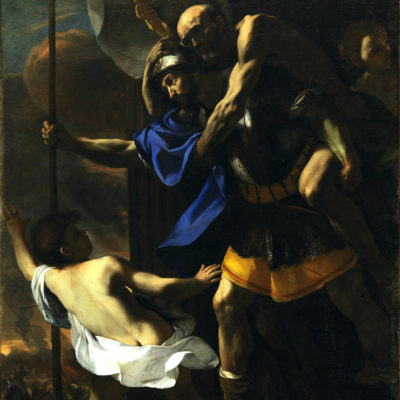
Q as QUEIROLO
When you visit the amazing Sansevero Chapel in Naples, the only sculpture that rivals the Veiled Christ is the famous Disil, sculpted by the Genoese Francesco Queirolo. The artist, who took seven years to create his masterpiece, wrapped in the mesh of the net, left splendid memories also in Rome, such as the beautiful Autumn, which still decorates the top of the Trevi Fountain.
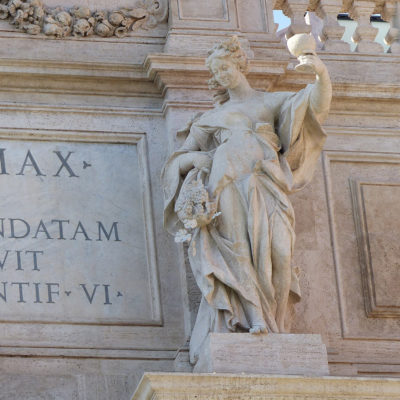
R as RAGUZZINI
Going to the center of the scenic St. Ignatius’ Square, you have the opportunity to admire the architectural masterpiece of Filippo Raguzzini, considered by many the most worthy Roman follower of Francesco Borromini and one of the greatest exponents of the Roman Rococo style. Raguzzini brilliantly solved a not easy compositional question, designing a real theatrical scene in front of the church, with concave walls and rounded corners.
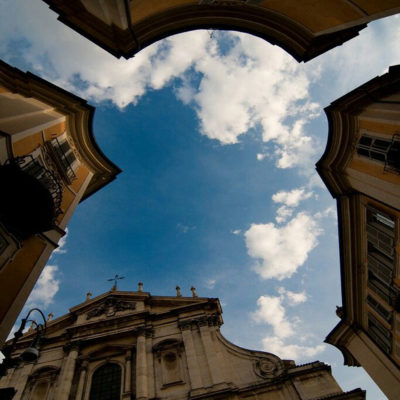
S as SARTORIO
At the beginning of the 20th Century many Symbolist artists, disappointed by politics, took refuge in myth. Among them stands out Aristide Sartorio, who in “The Gorgon and the Heroes” represents, within a primordial nature, a beauty in a decadent key, with life and death at the same time. The Gorgon, in fact, does not care about men and annihilates them, indifferent to their race and their symbols of power (crown, snake and stick).
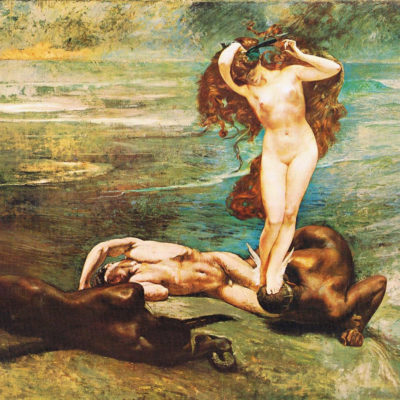
T as TASSI
Speaking of the painter Agostino Tassi, nicknamed “o smargiasso” (the tough guy), his condemnation to exile for the rape of his colleague Artemisia Gentileschi and the attempt to bribe witnesses at the trial always come to mind. In reality, Tassi played an important role in 17th Century Rome, becoming famous as a landscape painter and superb quadraturist, as can be seen in the Sala dei Corazzieri in the Quirinal Palace or in Lancellotti Palace (photo).
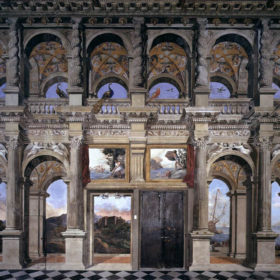
U as UNTERPERGER
A few steps from Siena’s Square, in the Park of Villa Borghese, stands out a circular pool dug into the ground, with a group of four sea horses holding a second smaller pool with their heads and tails. The fountain was built at the end of the 18th Century by Cristoforo Unterperger, an artist of great fame during the Neoclassical period, who was called upon to decorate all the most important papal residents, from the Vatican to the Quirinal Palace and as far as Castelgandolfo.

V as VON VERSCHAFFELT
When we talk about Flemish people, in the history of art, it comes to mind the meticulous representation of fruits and flowers or the perfect weaving of tapestries. In this case, however, it is a Flemish sculptor who achieved imperishable fame: it is Peter Von Verschaffelt, who sculpted in bronze a mighty St. Michael the Archangel in the act of refreshing the sword,. It was his only Roman work, which will become the everlasting symbol of the St. Angel’s Castle.
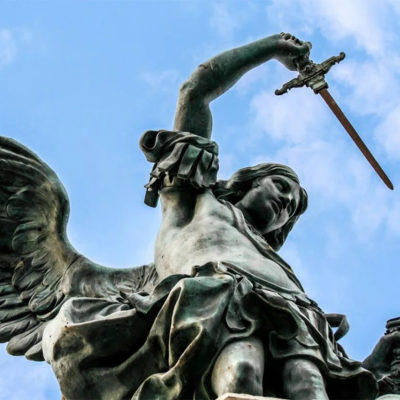
W as WENZEL
At the end of the visit to the Vatican Pinacoteca, the visitors are welcomed by “Adam and Eve in the Earthly Paradise”, an absolute masterpiece by Peter Wenzel. Famous “animalist painter”, Wenzel gathered around the figures of Adam and Eve over two hundred animals from all over the world, reproduced not only with pictorial skill, but also with in-depth knowledge and scientific precision, demonstrating his very high pictorial virtuosity.
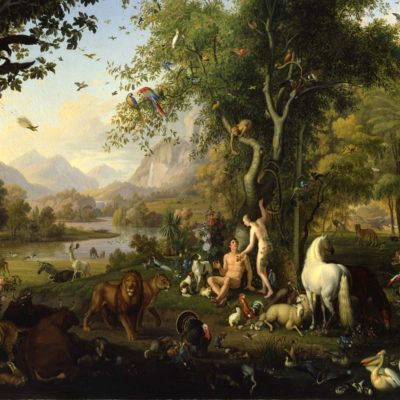
X as XIMENES
The quadriga driven by a winged Victory, sculpted by the Palermitan sculptor Ettore Ximenes, still surmounts the famous “Palazzaccio” (Ugly Palace). Ximenes linked his sculptural art with the new nationalist ideal of the late 19th Century, but then, at the beginning of the 20th Century, he turned towards the Liberty style, giving free expression to his creativity, the final culmination of which was the design and decoration of his home, the extravagant Villino Ximenes.
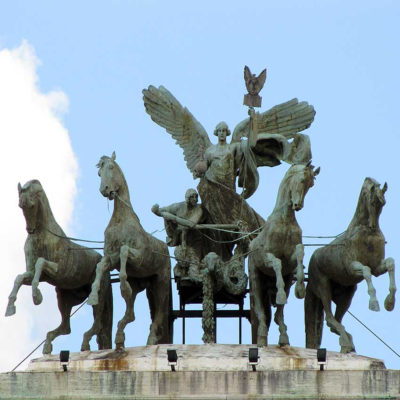
Y as YOSHIDA
Close to the National Gallery of Modern Art and a few steps from the Faculty of Architecture of Valle Giulia, it is possible to cross an imaginary threshold and arrive on the opposite side of the planet. The Japanese Institute of Culture was built in perfect Heian style by the architect Yoshida Isoya, who added a wonderful garden with pond designed by his colleague Ken Nakajima (always sold out during the rare guided openings).
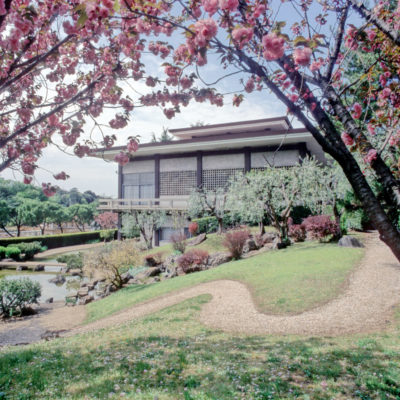
Z like ZUCCARI
Arrived in Rome, the artist Federico Zuccari had the idea to build for himself a residence worthy of his fame and extravagance. Touching the economic ruin to satisfy his appetites, Zuccari modelled the facade along Via Gregoriana with grotesque decorations of doors and windows. Instead of gaining prestige, he achieved the opposite effect, since the Roman citizens ironically called his palace “the house of monsters”.

Remember, never travel without travel insurance! And never overpay for travel insurance!
I use HeyMondo. You get INSTANT quotes. Super cheap, they actually pay out, AND they cover almost everywhere, where most insurance companies don't (even places like Central African Republic etc!). You can sign-up here. PS You even get 5% off if you use MY LINK! You can even sign up if you're already overseas and traveling, pretty cool.
Also, if you want to start a blog...I CAN HELP YOU!
Also, if you want to start a blog, and start to change your life, I'd love to help you! Email me on johnny@onestep4ward.com. In the meantime, check out my super easy blog post on how to start a travel blog in under 30 minutes, here! And if you just want to get cracking, use BlueHost at a discount, through me.
Also, (if you're like me, and awful with tech-stuff) email me and my team can get a blog up and running for you, designed and everything, for $699 - email johnny@onestep4ward.com to get started.
Do you work remotely? Are you a digital nomad/blogger etc? You need to be insured too.
I use SafetyWing for my digital nomad insurance. It covers me while I live overseas. It's just $10 a week, and it's amazing! No upfront fees, you just pay week by week, and you can sign up just for a week if you want, then switch it off and on whenever. You can read my review here, and you can sign-up here!








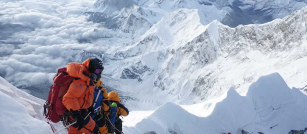
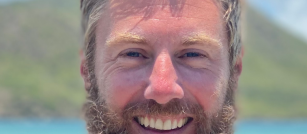
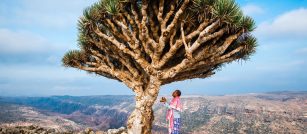

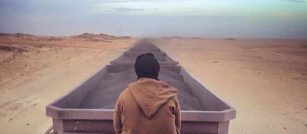
 As you know, blogging changed my life. I left Ireland broke, with no plan, with just a one-way ticket to Thailand
and no money. Since then, I started a blog, then a digital media company, I've made
more than $1,500,000 USD, bought 4 properties and visited (almost) every country in the world. And I did it all from my laptop as I
travel the world and live my dream. I talk about how I did it, and how you can do it too, in my COMPLETELY FREE
Ebook, all 20,000
words or so. Just finish the process by putting in your email below and I'll mail it right out to you immediately. No spam ever too, I promise!
As you know, blogging changed my life. I left Ireland broke, with no plan, with just a one-way ticket to Thailand
and no money. Since then, I started a blog, then a digital media company, I've made
more than $1,500,000 USD, bought 4 properties and visited (almost) every country in the world. And I did it all from my laptop as I
travel the world and live my dream. I talk about how I did it, and how you can do it too, in my COMPLETELY FREE
Ebook, all 20,000
words or so. Just finish the process by putting in your email below and I'll mail it right out to you immediately. No spam ever too, I promise!
